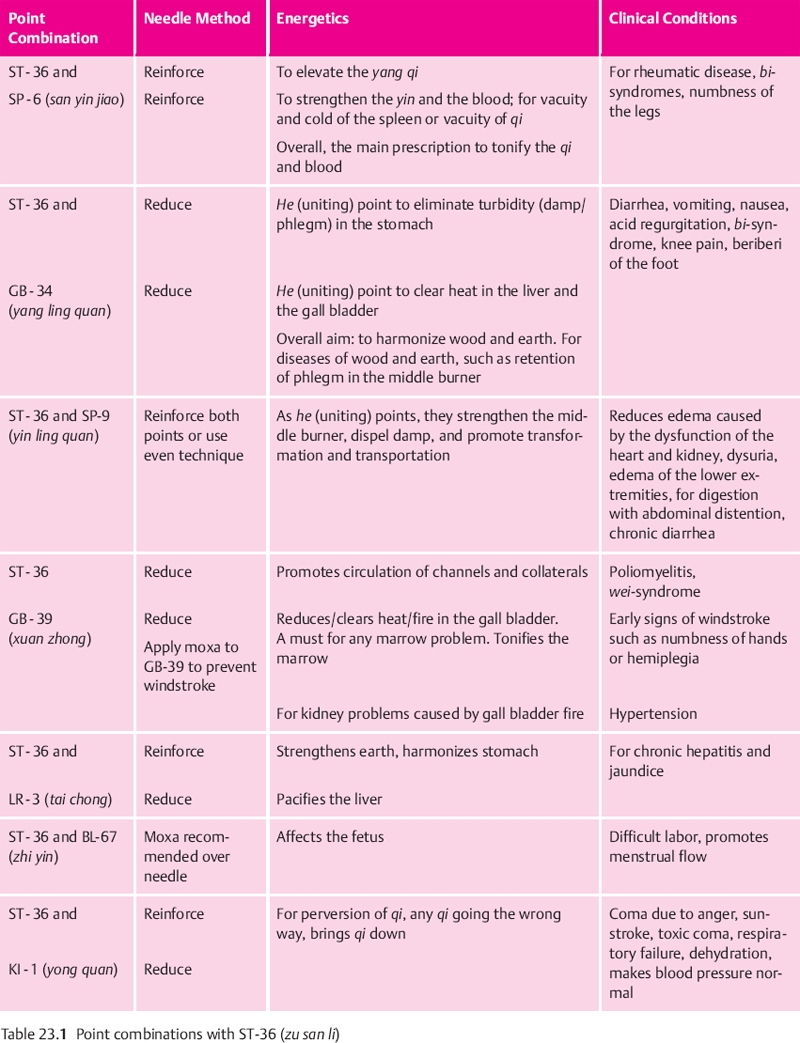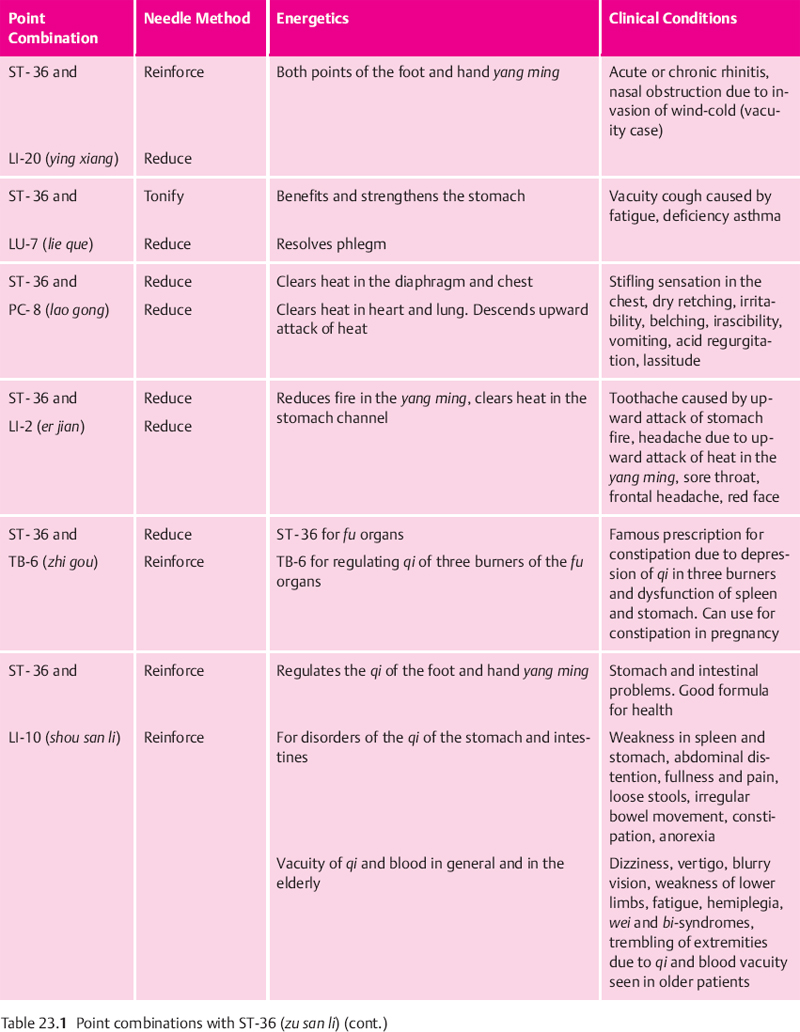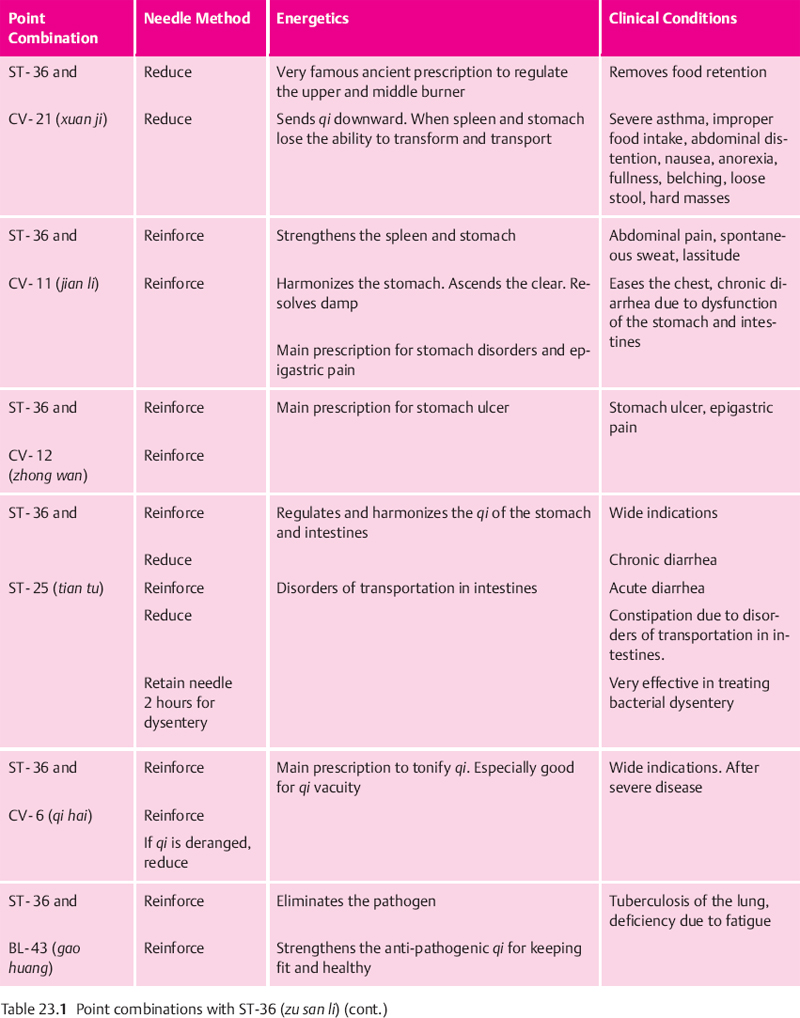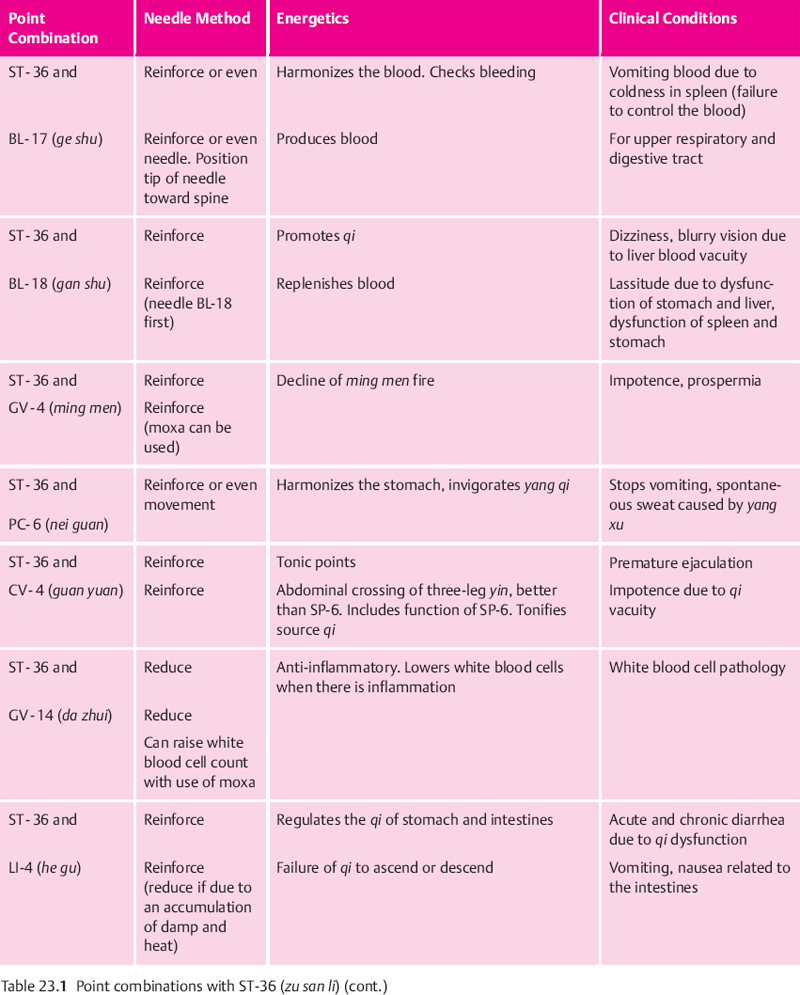As practitioners of Oriental medicine, we know that acupuncture points are a vortex of physiological activity that govern certain body parts. These points may have certain elemental energies; for instance, “water” points, which can add or take away water from the body, regulate water, or they may have domain over the zang fu organs or essential substances.
By virtue of simply sticking needles into a point, physiological functions are not automatically activated. In order to achieve the therapeutic usage of a point, some style of needle technique needs to be applied. It could involve the active twirling of the needle (a typical Chinese technique) or simply the subtle but as equally effective positioning of a needle in relation to the flow of qi in the channel (a common Japanese method).
In this chapter, these concepts are illustrated by showing the use of a particular point, ST-36 (zu san li), and how it can achieve varied clinical effects in two ways—first by the specific needle technique employed, and second, by its combination with certain points. Zu san li was specifically chosen because of its multiple clinical energetics and its importance in the clinician’s repertoire of treatment points.
In the Chinese body of points, ST-36 is perhaps the most renowned. From a classical standpoint, we know it as the he (uniting) point of the stomach channel. He (uniting) points are those in which the qi of the channel is deeply converged. Thus, they have a direct effect upon the organ, in this case the stomach. Likewise, on a yang channel, he (uniting) points correspond to “earth” points elementally. This means these points can regulate “earth” energy, by “adding” or “taking” away “earth” energy, for instance dampness. The way to achieve the addition or removal of the dampness is by way of needle technique. A tonification technique can strengthen the earth element and a dispersion technique can disperse excess earth energy. Therefore, we can appreciate the critical relationship of needle technique to point selection. Point selection, of course, is contingent upon the treatment plan, which in turn is constructed in coordination with the diagnosis.
Returning specifically to ST-36, as an earth point on an earth channel, it possesses additional status of an horary point. Horary points have the same elemental energy as the channel that they are located on. Possessing this unique quality is analogous to a “double dose” so to speak of that elemental energy. In the case of ST-36, as an horary point on an earth channel, this makes it a very “earthy” point. But again, it is through needle technique that we decide what to do with that earth energy.
In terms of indications, that is, clinical conditions that are a direct function of the classical energetics discussed above, ST-36 is known for treating gastric pain, vomiting, abdominal distention, indigestion, borborygamus, diarrhea, constipation, dysentery, mastitis, dizziness, mental disorders, hemiplegia, beriberi, aching of the knee joint, breast abscesses, edema of the limbs, difficult urination, loss of urine, paralysis, seizures, asthma (lung or kidney type), duodenal ulcers, depression, and abdominal and gastric illness.
In acupuncture treatment it is rare for only one point to be needled. Therefore let us turn our attention to the use of ST-36 with other acupuncture points to see how they work synergistically, as well as which needle technique needs to be chosen to accomplish those results. Source materials for this discussion were obtained in a lecture I attended in 1988 at the International Training Center of the Academy of Traditional Chinese Medicine in Beijing, China, entitled “Very Famous Old Prescriptions for ST-36.” In lieu of a lengthy discussion, and for convenience, this information is summarized in Table 23.1. The practitioner may select any tonification (reinforcement) or dispersion (reduction) techniques that he/she prefers. Standard point locations and depths of insertion should be used and if required, may be consulted.
< div class='tao-gold-member'>










